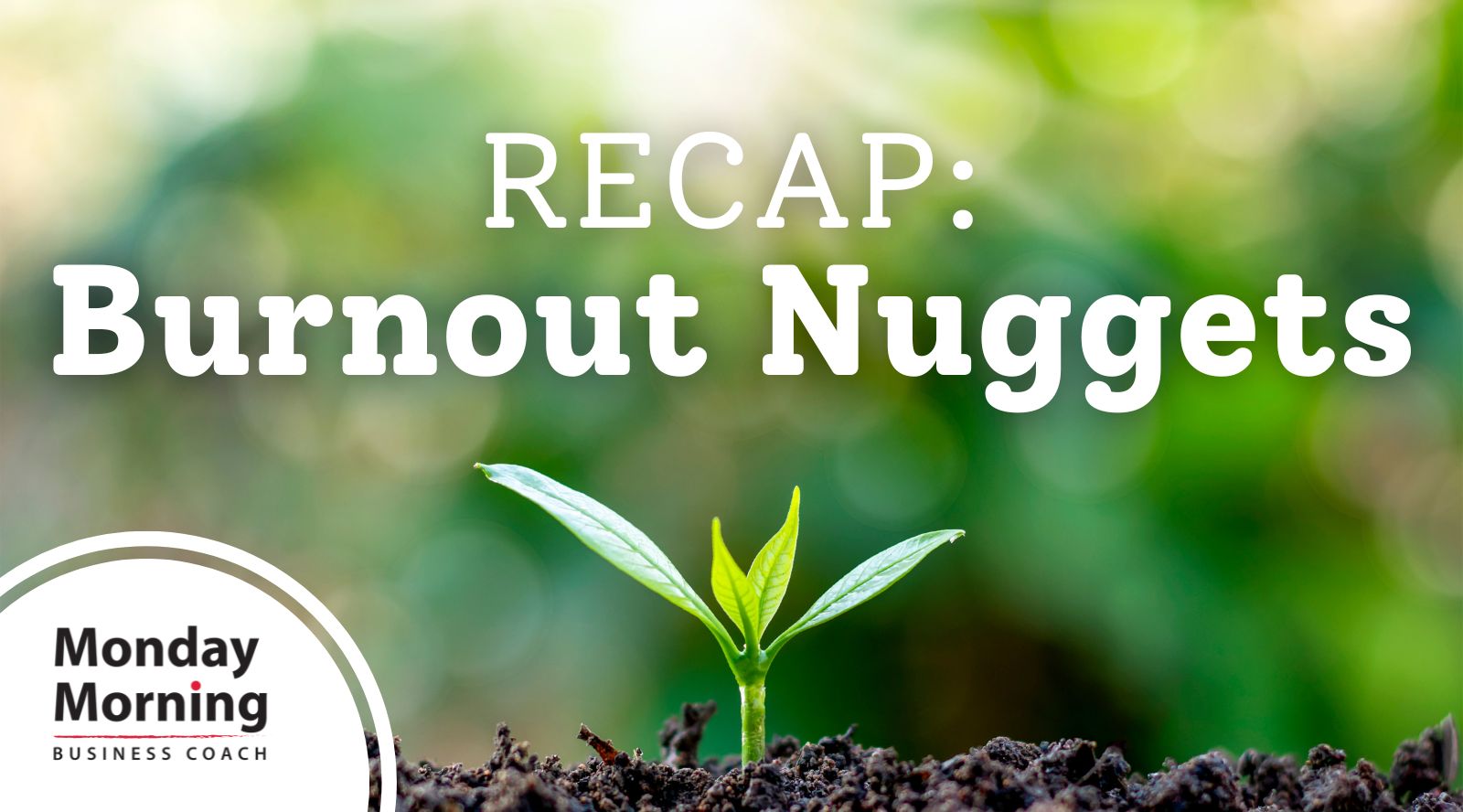If you’ve been with us over the past several weeks, you may have seen our various posts about individual and team burnout.
We know you’re busy—that’s why we took our time to talk about this important topic over several weeks. AND, because you’re so busy, we realize that you may not have had time to read each one of them. So today, we’re doing a recap for you with links to the various posts and to the two PDF summaries.
Your health and wellness are important, and burnout is serious. Burnout is, in many ways, a response to depletion and has very real physical, emotional, and spiritual consequences.
Learning how to take care of yourself is critical
so you can live with energy, success, and satisfaction.
Modeling a healthy work/life balance
is just as important for the wellness of your employees.
So, what can you do as an individual and as a manager?
The short answers are:
- For individuals: the common theme we’ve found, is that connection is key. It’s connection to both self and others and knowing when you need one versus the other. Consider checking in with yourself regularly to ask, “What do I need today? Connection to myself, connection to others, or some combination of both?”
- For managers and leaders: we’ve seen the power of curiosity, caring, and connection in creating an environment where people feel seen and supported. It’s important to create a culture where people take care of themselves and where supporting one another is the norm.
If you’d like to dig into the details of any or all of the full posts and PDFs, these links will get you there:
- Burnout and YOU
- Burnout Nuggets: Connection to SELF
- Burnout Nuggets: Connection to OTHERS
- Individual Burnout PDF
- Burnout Nuggets for Managers
- Burnout Nuggets for Managers: Curiosity
- Burnout Nuggets for Managers: Caring
- Burnout Nuggets for Managers: Connection
- Team Burnout PDF for Managers
For many, burnout is due to some combination of workplace demands, personal responsibilities, and the strain of the past few years.
As we mentioned in the initial post, researchers are finding that it could take years to fully recover from burnout and exhaustion. In an article on duke.edu, Psychiatry and Behavioral Science Professor, Robin Gurwitch, describes this state as “cumulative stress”.
Think of cumulative stress as building blocks
that continue to stack upon one another.
The higher the stack the more it is at risk for tipping.
– Robin Gurwitch
If you or your team are nearing burnout, consider taking one new small step from our posts. Nurturing yourself and your relationships are key to living a life of satisfaction and purpose.
Let us know what’s worked for you!
If you’d like burnout support for
you or your team,
contact us today.


